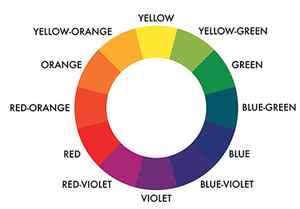From Green to Purple: How to revive your Loropetalum
Loropetalum, an evergreen shrub of Chinese origin with a lushly weeping character, comes in a vibrant range of foliage colors from a bright lime green to the deepest, darkest of purples. They are easy to grow, tolerate a wide range of soils and landscape conditions, and the ones with purple foliage add a vivid pop of color alongside traditional green foundation plants.
Yet sometimes things don’t go as planned, and your deliciously purple fringe flower may start to turn green. There are a few reasons for this, most, which can be addressed by working the soil or moving the plant to a more appropriate location. Read on to discover what to do if your purple Loropetalum – well – isn’t.
Too much shade
While Loropetalums are amenable to partial shade, the deep shade directly under a tree or on the north side of your home can be a little too dark for the plant to look its best. The purple foliage color is caused by anthocyanin, a pigment that is produced when the plant is in the sun. If you live in a mild coastal climate, give your Loropetalums a half-day of sun, whether in the morning or the afternoon. If you live in a hotter inland climate, morning sun is ideal to give your fringe flower enough time to soak up the sunshine and color up, without causing stress.
Too much intense heat
While it may sound strange that either too much shade or too much heat can cause the same problem, the pigment production in Loropetalum is inhibited by extreme heat, especially in many older varieties, which have not been bred to hold their purple color effectively. If you live in a climate where it gets very hot, plant your Loropetalum on the east side of your home where it will receive just a few hours of direct morning sun. Keep it shaded during the hottest parts of the afternoon, and it should recover from heat stress and color up again.
Soil is too alkaline
Fringe flowers are generally pretty relaxed about soil conditions, and can tolerate a variety of soil types. However, the wrong pH can make it hard for plants to take up the nutrients they need to put on new, healthy growth. Loropetalum varieties all prefer acidic soil with a pH between six and seven. If you do a soil test and find that your soil is alkaline, apply granular sulfur or cottonseed meal, amend the soil with sustainably sourced peat moss, or top dress with a layer of pine needles, whichever is most easily available to you.
Lack of nutrients
Another problem that can cause greening in fringe flowers is a lack of nutrients. Many older varieties of Loropetalum have the deepest purple color in their new growth, and the old foliage gradually becomes more green. If your Loropetalum is experiencing some kind of stress to where it hasn’t been growing actively, consider applying an organic all-purpose fertilizer to stimulate a gentle flush of new growth all over the shrub. The new growth will be a more vivid shade of purple than the older leaves.
Wrong variety
Unfortunately, many older varieties of purple fringe flower weren’t bred to the same exacting standards they are today. Many are purple in spring when the new growth emerges, but gradually turn a dull bronze green as the season goes on.
Try these new varieties
If you are doing everything right for your Loropetalum and it’s still not staying purple, consider trying one of the newer varieties, which has been specifically bred to stay a gorgeously deep purple-black color all season long.
Purple Diamond® Semi-dwarf Loropetalum is a compact shrub to about 4 feet tall, and is so purple that when you transplant it, you may even notice the roots are tinted purple! Because it’s a more moderate grower than older varieties of Loropetalum, it’s easier to fit into your landscape without having to prune.
Purple Pixie® Dwarf Weeping Loropetalum is the only low-growing fringe flower out there, and it’s perfect for cascading down the side of a container or hiding a retaining wall. It reaches about 1 foot tall and 4 feet wide, and also makes a great groundcover in the garden.
Fringe flowers are a relatively trouble-free plant and provide a dramatic weeping form and color in the landscape. By choosing the right varieties, giving them just enough sunshine, and making sure your soil is in balance, you’ll have a long and happy relationship with these stylish, easy-care shrubs.
How to Get An Eggplant Hair Color

We’d be lying if we said we didn’t love all things purple—and the still popular purple hair color trend is no exception! If you’ve been thinking about stepping into this regal hue but still figuring out what shade of purple you should dye your hair, consider trying an eggplant hair color. Yup, just like the vegetable. It’s a dynamic shade that looks great on all skin tones, and like other hair color trends, offers options on how to incorporate it into your mane. Try it in an all-over purple style, or opt for a subtler alternative, which involves using a balayage highlighting technique. Either way, we’ve rounded up tips and the best drugstore products to help you get and maintain this gorgeous purple hair color.
How To Get An Eggplant Hair Color
Getting your shade of purple right might seem complicated but it doesn’t have to be. You can actually DIY this color at-home using the L’Oréal Paris Féria in Power Violet, Power Violet – Intense Deep Violet, or Midnight Violet, depending on your desired hue. Alternatively, if you prefer going for the balayage look, seek out a professional who can expertly create your hand-painted eggplant highlights. Want to try the purple balayage sans the salon visit? L’Oréal Paris Colorista 1-Day Spray in Purple lets you test your highlighting skills at home without the commitment. If it doesn’t come out as your desired, no worries. It washes out with just one shampoo!
After dyeing your hair it’s important to know how to take care of it, for longer-lasting color and to maintain healthy hair.
Tip #1: Use A Hair Care System For Color-Treated Hair
When it comes to maintaining an eggplant hair color, the most important thing is to swap your daily hair care products for ones that are specifically formulated for color-treated hair. Try the L’Oréal Paris EverPure Repair & Defend Shampoo, the L’Oréal Paris EverPure Repair and Defend Conditioner, and the L’Oréal Paris EverPure Repair Remedy Balm together for best results This line works to deeply repair and restore strength to your hair with its nourishing formula that includes acai palm and antioxidants, leaving it renewed, shinier, and stronger.
Tip #2: Give Your Hair Some Extra TLC
After coloring your strands, it’s always good to give your hair some extra care and attention. You can do this by incorporating a hair mask into your weekly hair care routine. We love the L’Oréal Paris Elvive Total Repair 5 Power Restore Multi Use Treatment which is formulated with repair concentrate and protein to help build stronger hair. You can also grab a deep conditioner once a week to (explain to do what for your hair) Try L’Oréal Paris Elvive Extraordinary Oil Rapid Reviver Deep Conditioner or the L’Oréal Paris Elvive Color Vibrancy Rapid Reviver Deep Conditioner.
Tip #3: Skip The Heat Tools
Make sure to give your hair a break from hot tools and opt for heat-free styling alternatives instead. Excessive heat use can cause damage to the hair and if you’re constantly using heat on hair color-treated hair, it will make your stands more fragile and weak. You can create endless hairstyles without using any heat, from curls to braids and beachy waves.
Editors Tip: If you really just can’t live without your curling wand or flatiron, make sure to apply a heat protectant before styling, like the L’Oréal Paris Dream Lengths Heat Slayer Pre-Iron spray.




